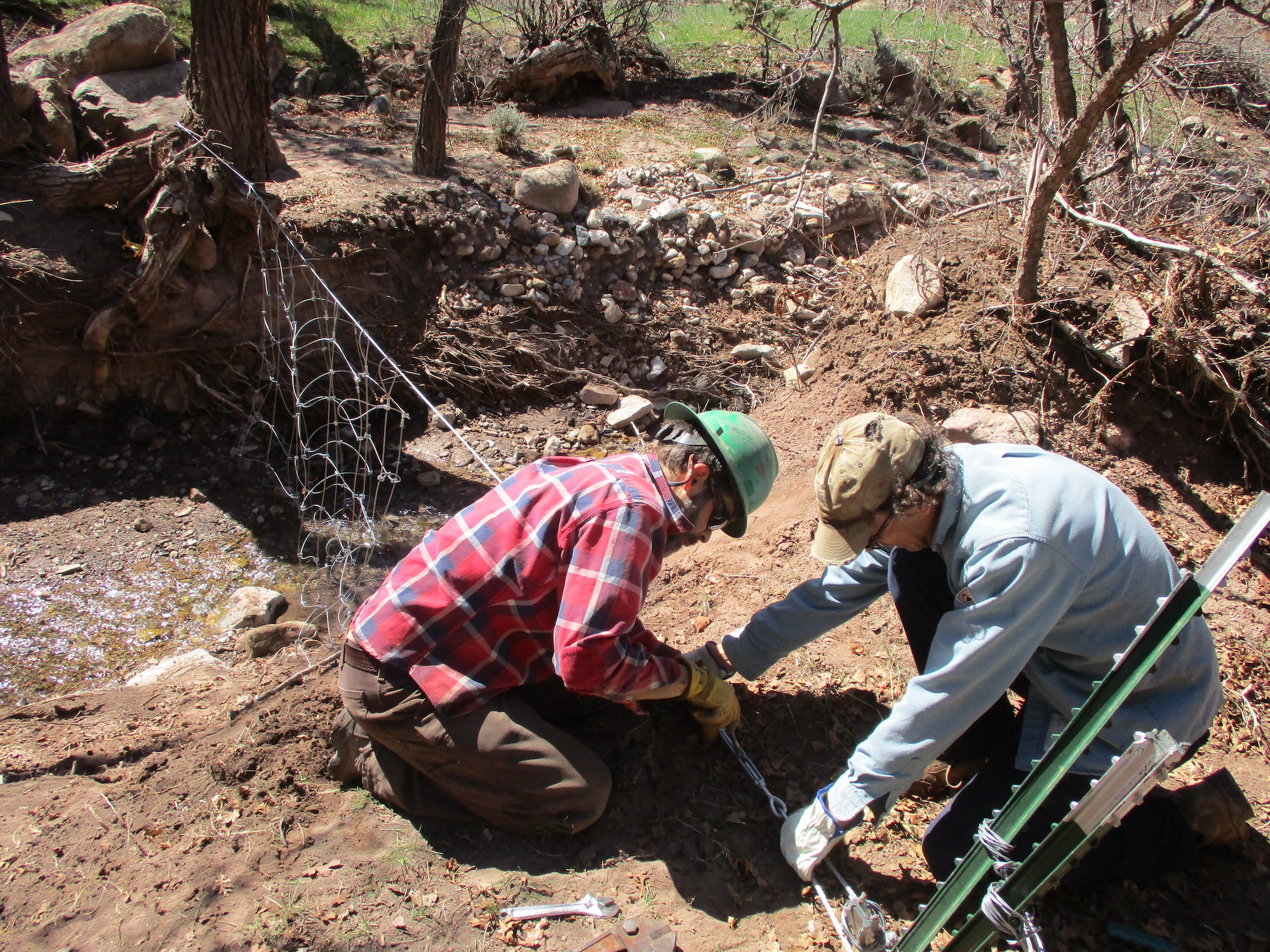Some information may be outdated.
The Pack Creek Fire scar is stark along the creek bed above the Pack Creek neighborhood: charred cottonwood trunks support bare crowns, crispy brown leaves cling to blackened scrub oaks, and the red-brown needles of fire-damaged junipers contrast against the healthy green of junipers on the slopes above. The June 2021 fire started in the Pack Creek Picnic Area and spread up into the La Sal Mountains, growing to almost 9,000 acres; several structures in the Pack Creek subdivision were damaged or destroyed.
Flooding that followed the wildfire also left damage. Heavy August rain directly above burned, de-stabilized slopes that drain into Pack Creek brought a surge of fast-moving water down the creek, along with large boulders, logs, and other debris. The creek bed has become deeply incised, a condition that can negatively affect the stream ecosystem and facilitate future major flooding.
The Manti-La Sal National Forest partnered with the nonprofit Southwest Utah Wilderness Alliance to install permeable barriers along Pack Creek that will slow the movement of debris and reduce the slope of the creek bed. A type of “analog beaver dam,” the barriers are created by installing heavy-duty metal cable nets across the creek, where they’ll catch any large debris coming downstream. Once enough larger pieces have accumulated, smaller debris and sediment will fill in the gaps, causing water in the creek to slow and pool behind the dam.
Forest Service Hydrologist Daniel Lay chose the locations for two such devices. He explained that he measured a 300 foot transect of the creek and found a 4.7% slope; he’s hoping the nets, once they’ve captured enough debris and sediment to function like a dam, will reduce that slope to 2 or 3%.
SUWA used money donated by locals who conducted a tee-shirt fundraiser in 2021 to support post-fire restoration. Laura Borichevsky, social media and digital advertising specialist for SUWA, teamed up with local artist Abby Leighton, who designed the shirts, and they raised about $6,000. That paid for two heavy-duty metal-cable nets. Several volunteers joined SUWA and Forest Service staff to dig holes in the creek bed and banks to install auger anchors to attach the nets. The ground was rocky and in some of the tougher spots, it took over an hour to bore the red anchor stakes deep enough, but volunteers were light-hearted as they stood in cold creek water and swung sledge hammers. The bottom edge of the first net was attached to the anchors with metal quick-links, and the top was stretched along a metal cable supported by a tree on one side and a tee-post anchor on the other. A second net was installed further upstream.
Lay plans to use cameras to monitor debris flow through the nets. If they’re successful in raising the stream bed and slowing the flow, the Forest Service may apply for funding from the state-managed Watershed Restoration Initiative to install more.
Appreciate the coverage? Help keep local news alive.
Chip in to support the Moab Sun News.





